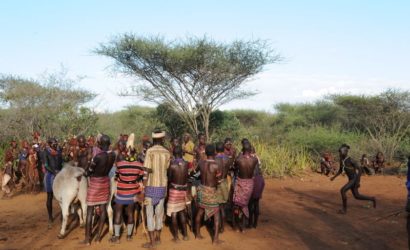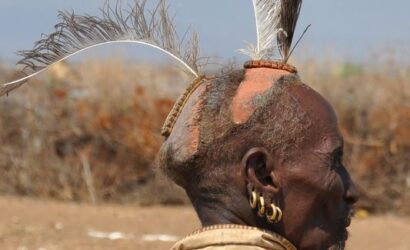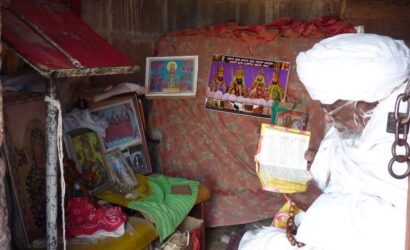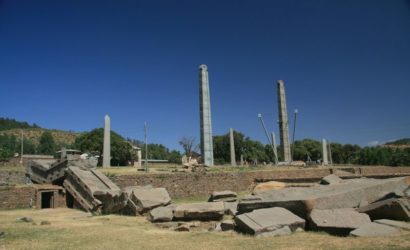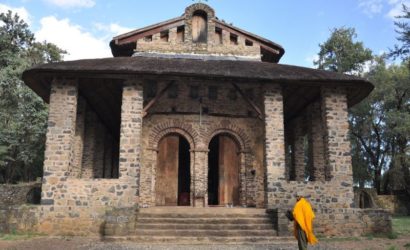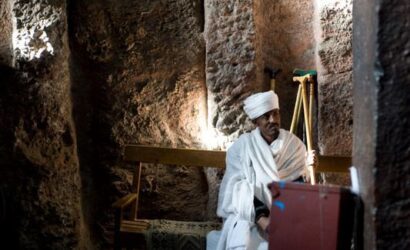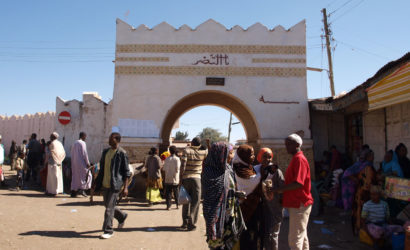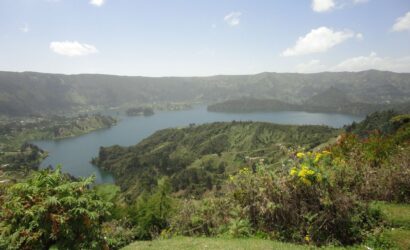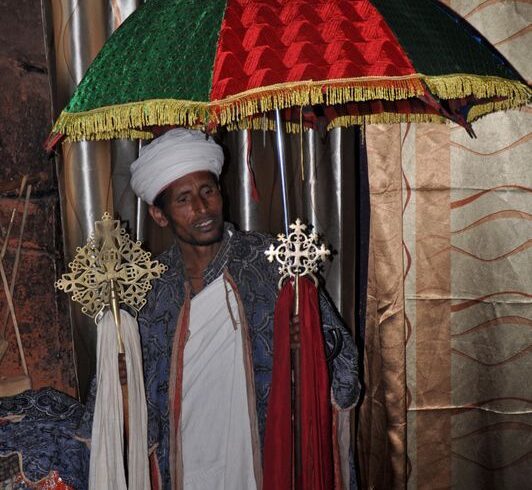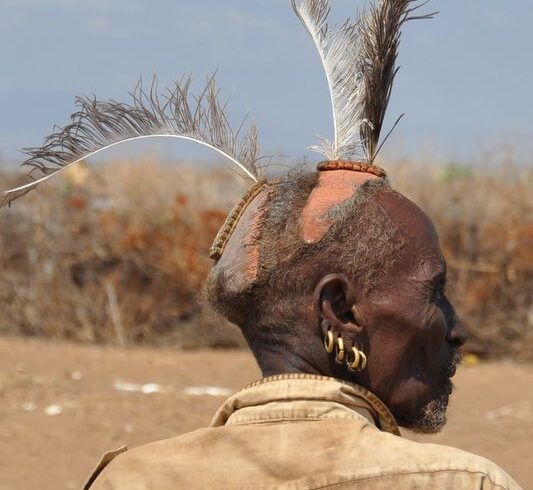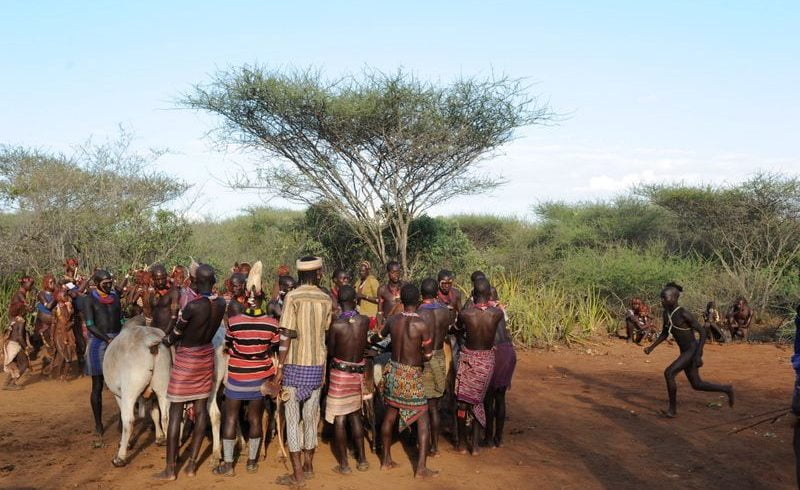When you really want to meet the ethnic groups in the south and have time available then this itinerary might suit you. We will meet people of more than 10 different ethnic groups and visit 5 different markets. To be at the right place at the right time we have to keep an eye on which day it is. Meanwhile we visit 4 National Parks and enjoy the natural beauty of the country.
Itinerary
Day 1 :
(We) Addis Ababa
We will meet you at the airport and take you to your hotel for check-in. The first day we spent in the fascinating capital of the country: Addis Ababa. Depending on your time of arrival we take you on a half day or full day city tour visiting some sites of your choice like the Ethnographic Museum, National Museum, Trinity Cathedral, Mercato (the largest market of Africa) or the Entoto Hills just outside Addis Ababa.
Day 2 :
(Th) Addis Ababa - Arba Minch, 455 km/ ~8,5 hrs
This day we will have a full but interesting day driving. We travel through the rolling fertile hills along the Butajira Road and then down to the acacia savanna on the bottom of the Rift Valley. We pass the historical sites of Melka Kunture, Adadi Maryam an Tiya. A brief visit to one of these sites is possible.
Day 3 :
(Fr) Arba Minch (visit Nech Sar NP)
Our first day in Arba Minch is dedicated exploring Nech Sar National Park. In the morning we go on gamedrive and walk in search for the endemic Swayne's hartebeest and other savanna animals like Burchell's zebra, Grant's gazelle and warthog. Unfortunately it is not prime game viewing like in East Africa, the scenery is great though. After a relaxing lunch we depart for a boat trip on Lake Chamo and have a good chance to come up close with most probably the biggest crocodiles you have ever seen. Many (water) birds and hippopotamus are also easily found.
Day 4 :
(Sa) Arba Minch (visit Dorze people)
On Saturday it is market day in Chencha, the biggest town in the area where the Dorze people are living. In about one and half hour we travel the 36 km from Arba Minch at an altitude of 1400 m to the highland town of Chencha at 2900 m enjoying beautiful vistas over Lake Abaya and Lake Chamo on the way. After the market and lunch we visit the Dorze people in their famous beehive like huts. We see the preparation of their staple food made of false banana. Of course we try their food. Later this day we drive back to Arba Minch.
Day 5 :
(Su) Arba Minch - Turmi, 275 km/ ~5,5 hr
Today we travel further south and traverse the areas where Konso, Tsamay, Arbore and Hamar people are living. We visit an Arbore village on the way.
Day 6 :
(Mo) Turmi (visit Karo village and Hamar market)
Monday is the market day in Turmi where Hamar people from a wide area are attending. Before we visit the market, which only really gets going from midday, we visit the Karo people near Murelle. They live along the bank of the Omo River, about 62 km/ 1,5 hr from Turmi. During our stay in Turmi we might be lucky to witness an Evangadi dance or maybe even a Bulljumping ceremony.
Day 7 :
(Tu) Turmi (visit Dassanech and Hamar people)
In the morning we drive 72 km/ 1,5 hr to Omerate at the east bank of the Omo River. This is the area where the Dassanech people are living and we are going to cross the Omo River by local canoe to visit one of their villages. In the afternoon we have another chance to experience the Evangadi dance or the Bulljumping ceremony.
Day 8 :
(We) Turmi - Jinka, 125 km / ~2,5 hrs
Before we depart for Jinka we enjoy a walk around Turmi to explore the area on foot. When there's no water running in the Keske River (most of the time) we follow the riverbed and find almost certain the black and white colobus monkey and many birds. If we haven't visited a Hamar village yet we do it this morning. On the way to Jinka we pass the small village of Alduba where it is market day on Wednesday. This is Banna area but also neighboring Hamar or Bashada might visit. We arrive not to late in Jinka and you have time to explore this small town with its daily market. A visit to the museum at the South Omo Research Centre is recommended.
Day 9 :
(Th) Jinka (visit Key Afar market)
The Thursday market of Key Afar is one of the biggest in the region. Banna, Ari and Tsamay people travel from far to attend the market. A wide selection of goods and (fresh) produce is sold here and there is a cattle market. In the afternoon you have more time to explore Jinka.
Day 10 :
(Fr) Jinka (visit Mursi and Ari people)
Today explore more of the area around Jinka. In the morning we travel into the Mago National Park on our way to probably the most well known people of the Omo Valley: the Mursi. Don't expect much game on this brief visit to the park. After about a 2 hour drive we reach one of the villages where the Mursi people are living. We are heading back to Jinka for lunch and in the afternoon we visit the Ari people. A big contrast with the morning, Ari people adopted a more 'western' lifestyle and live on small compound where they grow a selection of crops.
Day 11 :
(Sa) Jinka - Konso, 155 km/ ~3 hrs
We have a lazy morning and breakfast because our first goal is the Saterday market in Weyto. We passed this village on our way to Turmi almost a week ago and you will be surprised how busy this little village will be today. But as at the other markets it gets going from the end of the morning and that's why we are not leaving early. At the market we find mainly Tsamay people but also Banna and Konso travel here. After visiting the market we proceed to Konso.
Day 12 :
(Su) Konso - Yabello, 100 km/ ~2,5 hrs
In the morning we visit the Konso people with their maze like villages and terraces for agriculture. They are also well known for their Waga stelae, grave markers for the brave and important men of this people. The cultural landscape of Konso is the youngest World Heritage Site of Ethiopia. After lunch we proceed to Yabello.
Day 13 :
(Mo) Yabello (visit 'singing well' and El Sod)
We are now in the heartland of the Borana people. Pastoralist who travel around with their camels and cattle. They are living in semi arid savanna and with their "singing wells" they provide water for de animals and themselves when water elsewhere is absent. You might be lucky to witness the chain of people bringing the water up, meanwhile singing to keep the spirits up. The crater of El Sod with a salt lake at the bottom offers great scenery and a challenging walk down (and up again) to see the harvesting process of the salt.
Day 14 :
(Tu) Yabello - Yirgalem, 260 km/ ~5 hrs
Today we leave the semi arid savanna and enter the green and fertile hills where a lot of the famous Ethiopian coffee is grown. We stay at the Aregash Lodge in Yirgalem situated at a coffee plantation. The lodge is a fine example of an eco-lodge. The huts are build in the same style as the surrounding Sidamo people. Delicious organic, home grown, food is served in the restaurant. It is a great place for a relaxing afternoon although short walks are available.
Day 15 :
(We) Yirgalem - Goba 275 km/ ~5 hrs
On our way to the Bale Mountains we pass Hawassa where we visit the fishmarket. The headquarters of the Park are situated in Dinsho and after finalizing the formalities there we enjoy a beautiful walk in the surrounding area. Here we have a very good chance to see the endemic mountain nyala and Menelik's bushbuck. After the walk we proceed to Goba, our base for the next days.
Day 16 :
(Th) Goba (visit Bale Mountains NP)
The whole day is spent to explore the Bale Mountains. This is going to be a day of extraordinary scenery and of course we continue our search for endemic species of which many are found in this area. Among them the Ethiopian wolf and many birds
Day 17 :
(Fr) Goba (visit Sof Omar caves)
This day, weather permitting, we travel to Sof Omar, 100 km/ 2,5 hr to the east. Here we admire what is believed the largest network of limestone caves in Africa. The Web River flows through the cave system and when the river is to high the caves are not accessible. In that case we explore more of the Bale Mountains.
Day 18 :
(Sa) Goba - Langano, 255 km/ ~5 hrs
We are leaving the mountainous area behind and travel down to the bottom of the Rift Valley again. Our last stop is at Langano, one of the Rift Valley Lakes. This is a great place to relax and enjoy a fresh dip in the water.
Day 19 :
(Su) Langano
If you want this is a whole day at leisure before you travel home. However we would like to take you to Shala-Abiata National Park for half a day. These twin lakes offer great scenery and abundant birdlife. Overgrazing by cattle seriously damaged the area and few larger mammals are found nowadays, but it is still worth to visit.
Day 20 :
20 (Mo) Langano - Addis Ababa, 195 km/ ~3 hrs
The last day of your unforgettable visit to Ethiopia brings us back to Addis Ababa. En route we visit Lake Ziway for some birdwatching. A hotel room for day-use is available in Addis. We say goodbye to dear friends with a visit to a cultural restaurant, enjoying the great Ethiopian food together with traditional music and dance from all over this fascinating country. After diner we take you to the airport for your flight back home.


